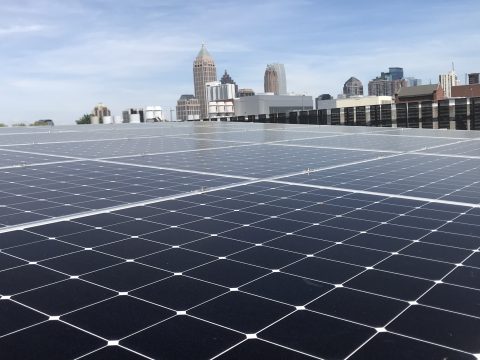The Energy Petal & its Imperatives
 One of seven focus areas of the Living Building Challenge (version 4.0), the Energy Petal is in a sense the most straightforward. It contains just two of the Living Building Challenge’s 20 Imperatives. But both those imperatives are doozies: Energy + Carbon Reduction and Net Positive Carbon. Together, they grapple with the core issues for buildings as they relate climate change.
One of seven focus areas of the Living Building Challenge (version 4.0), the Energy Petal is in a sense the most straightforward. It contains just two of the Living Building Challenge’s 20 Imperatives. But both those imperatives are doozies: Energy + Carbon Reduction and Net Positive Carbon. Together, they grapple with the core issues for buildings as they relate climate change.
The intent of the Energy Petal is to create new sources of renewable energy that allow projects to operate year-round in a resilient, pollution-free manner. In addition, the Energy Petal prioritizes energy efficiency as a means to reduce wasteful spending, of energy, resources, and capital.
Living Future Institute, Living Building Challenge 4.0 handbook
Energy + Carbon Reduction highlights
- Addresses both embodied carbon in materials and construction, and energy efficiency in operations.
- Requires new and existing building projects to demonstrate 20 percent “reduction in the embodied carbon of primary materials compared to an equivalent baseline.”
- Requires energy performance to exceed a 70 percent reduction from equivalent baselines in new buildings, 50 percent in existing-building projects and 35 percent in interior projects.
Net Positive Carbon highlights
- Designed to “foster the development and use of carbon-free renewable energy resources while avoiding the negative impacts of fossil fuel use.”
- Requires all projects to generate an amount power from onsite renewable sources by at least 5 percent.
- Requires projects to “be designed to be ‘zero ready'” by such means as installing infrastructure to support electric-vehicle charging.
- Requires a “resilience strategy to allow the building building to be habitable for one week” or to “participate in support for the local community in a disaster.”
For more information about how the Energy Petal was addressed in the Kendeda Building and for links to more resources about the Energy Petal in general, click here.
An important caveat: The information on this page is intended as and overview of the Imperatives as of our latest update. It doesn’t substitute for official guidance offered by the International Living Future Institute.